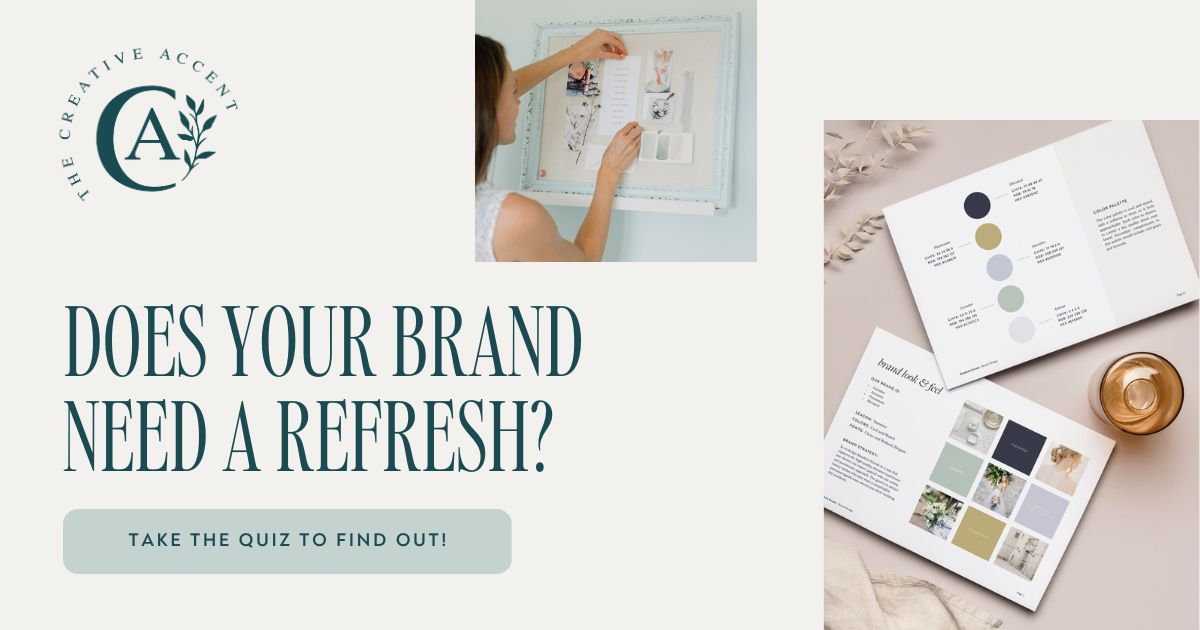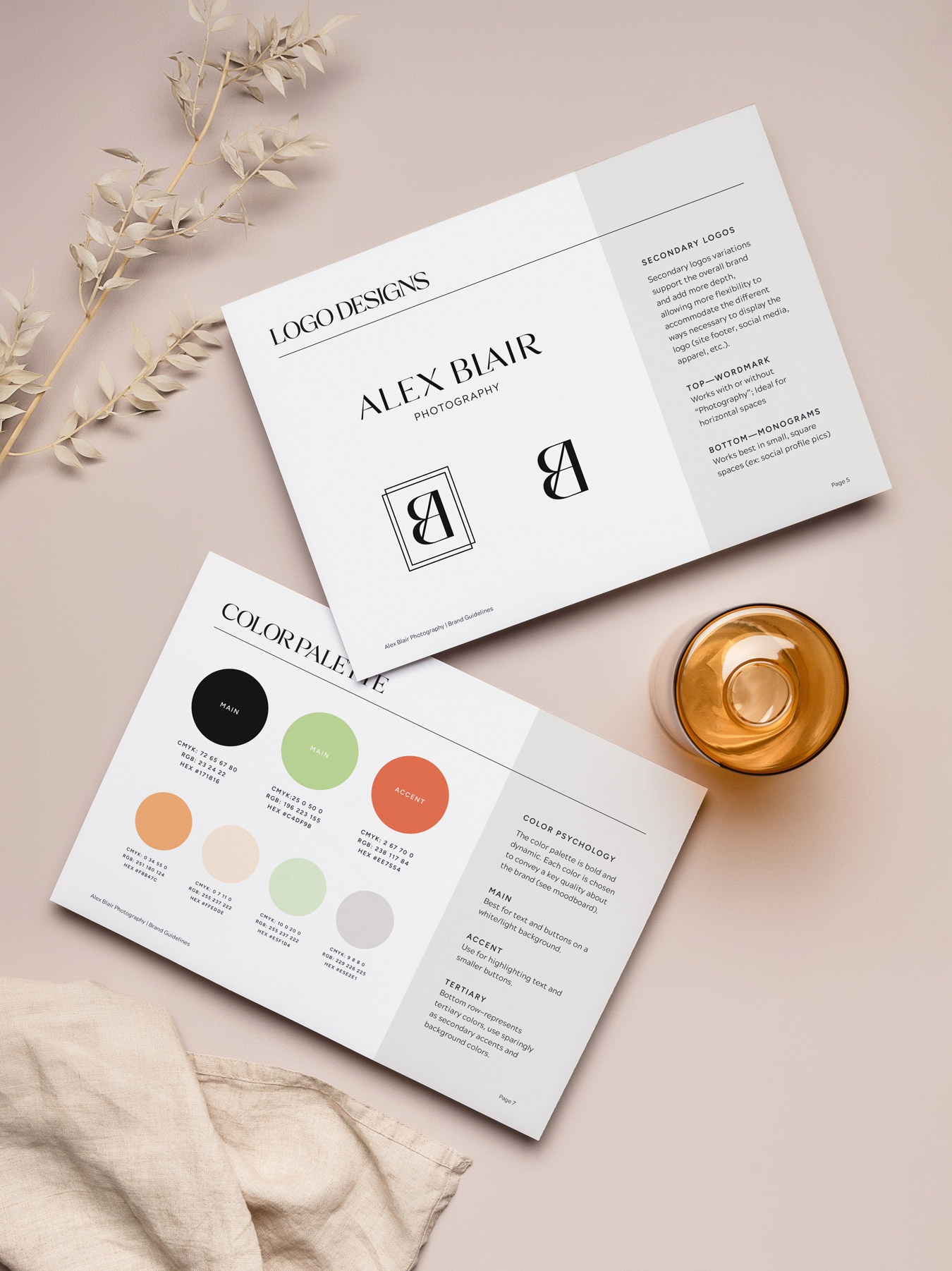Find out what makes a complete brand identity and 4 ways a brand style guide will help you maintain trust-building cohesiveness.
A brand style guide is a document that outlines the guidelines around how your brand assets should be used. How expansive this is will depend on the designer or creative agency you work with and how deep your brand strategy goes. This may include everything from your logo variations to brand persona.
But does having a clear set of brand guidelines REALLY matter—especially for the small business owner?
Sure, it’s nice to open up Canva and actually know which fonts and colors to use. That’s a few hours saved in your day. But the benefits don’t stop there. Let’s look at a few statistics:
- It can take 6-7 impressions for a brand to build awareness toward a potential customer
- 60% of companies reported 10-20% more revenue growth due to consistent branding
At the core, branding is about recognition. An impression can be any touch point: a blog, an Instagram post, walking past your store, or seeing a business card. Since it takes several impressions to build up that awareness (i.e. recognition) in the mind of your customers, those impressions need to be consistent or they won’t stick. For example, a potential customer resonates with your Instagram post. Later that same person visits your website, which looks nothing like your social media content. A valuable impression potentially lost.
All this to emphasize that brand cohesiveness matters and having a brand style guide to fall back on can help you maintain it. Let’s look at what exactly should be included in your brand guidelines, and 4 reasons you need one for your business.
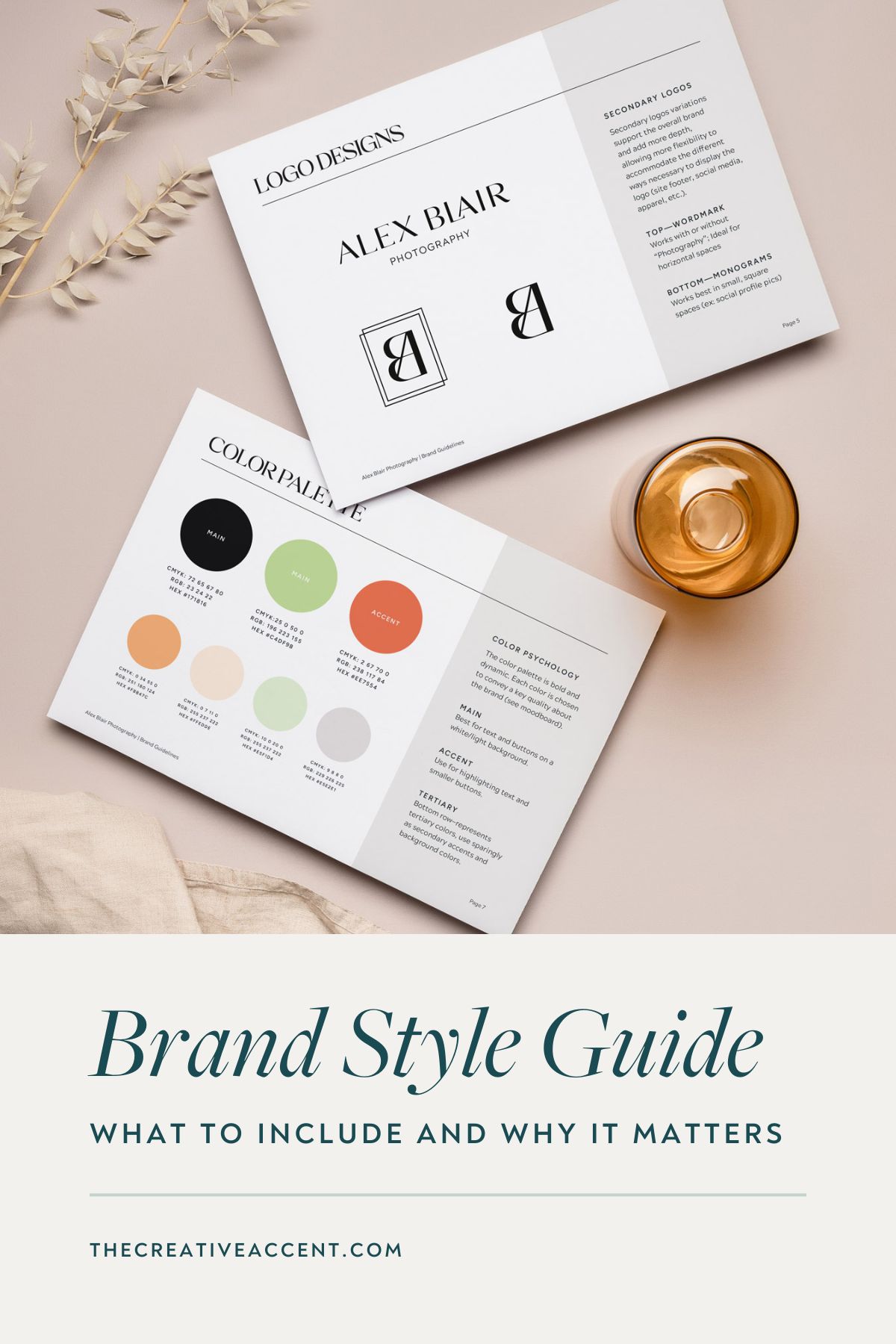
What should a brand style guide include?
Since your style guide is essentially an overview of all your brand assets, this question can better be phrased: What makes a complete brand identity? The following list is by no means exhaustive, but these are the primary elements we deliver with a full branding package here at The Creative Accent.
1. Moodboard & Creative Direction
The creative direction bridges the gap between strategic research and the design. That said, it’s a helpful reminder to include at the start of a brand style guide. After all, this is what sets the tone for the rest of the brand visuals. This section might include a moodboard, some specific keywords, or a brief summary of the creative direction.
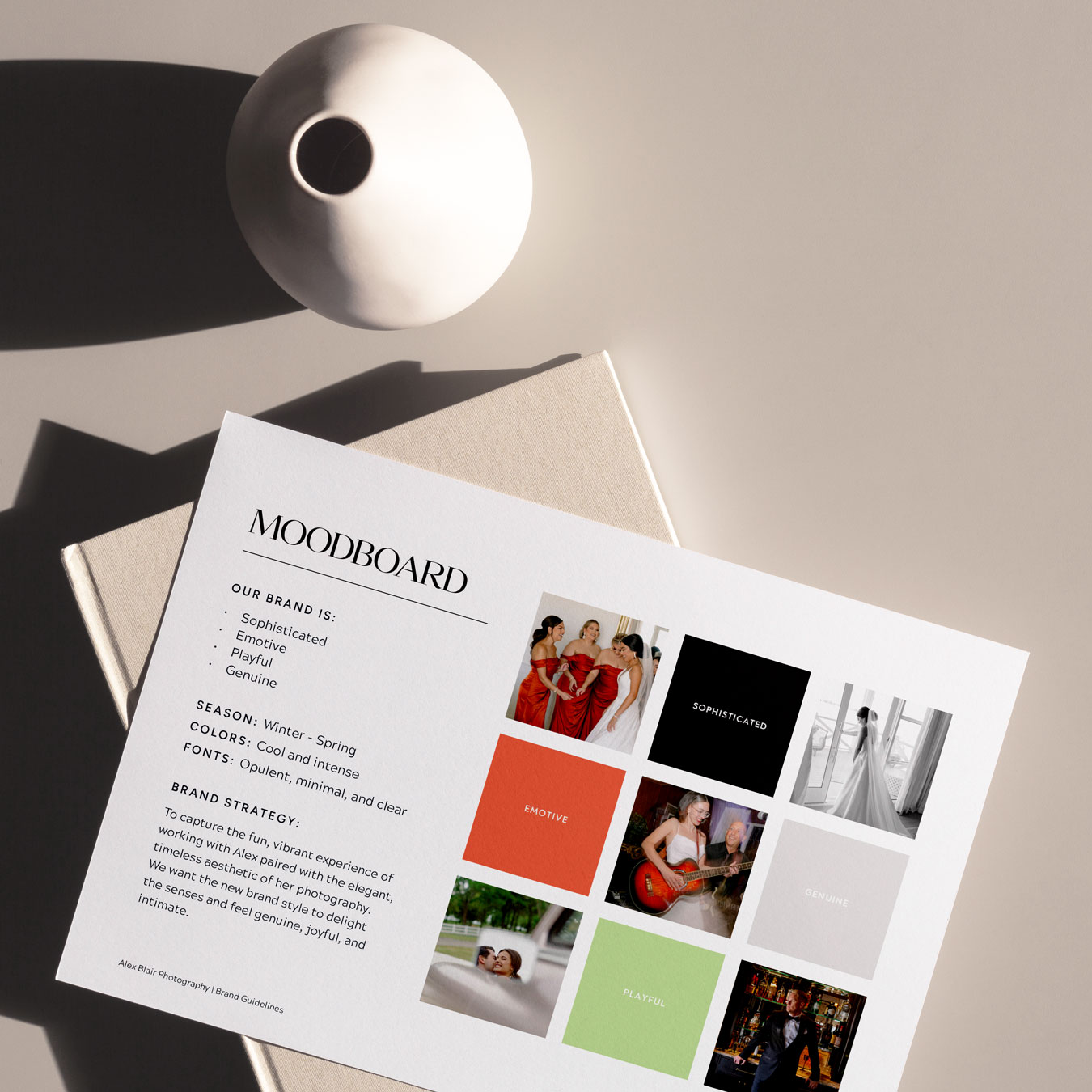
2. The Primary Logo Design
The primary logo design is the main logo used most often throughout the branding. The main logo usually combines the wordmark with a symbol and/or tagline. This is the logo variation you would expect to see on the front of your business card and website home page.
3. Secondary Logo Designs
Secondary logos are variations that support the overall brand and add more depth. Examples of secondary logos are monograms, submarks, and wordmarks. Having these allow for more flexibility to accommodate the different ways you might need to display the logo. For example, monograms often work well in round or square spaces (like social profile pictures), while the simplified wordmark works better is smaller, usually horizontal spaces. Read more about the creative uses for logo variations here.
4. Logo Design Uses and Guidelines
This section may include guidelines such as scale (what’s the smallest size you should display your logo), exclusion zones (how much breathing room should be left around your logo), and additional color variations. Any do’s and don’ts associated with using your logo design will be added here.

5. Color Palette
Choosing the right colors for your business is an essential part of defining the brand identity. This section breaks down the individual colors in your brand color palette and divides them up into main, secondary, and tertiary colors. Ideally, your brand style guide will outline the CMYK (print), RGB (web), and Hex codes for each color. Use the hex codes to plug into Canva, Flodesk and other online platforms that require your brand settings.
6. Typography Hierarchy
This section of the style guide outlines the fonts selected to complement the brand and how to use them. It defines the typography hierarchy—which fonts to use for your titles, headings, subheadings and body text. Keeping this consistent throughout all marketing touch points will help your brand look more professional and high-end.
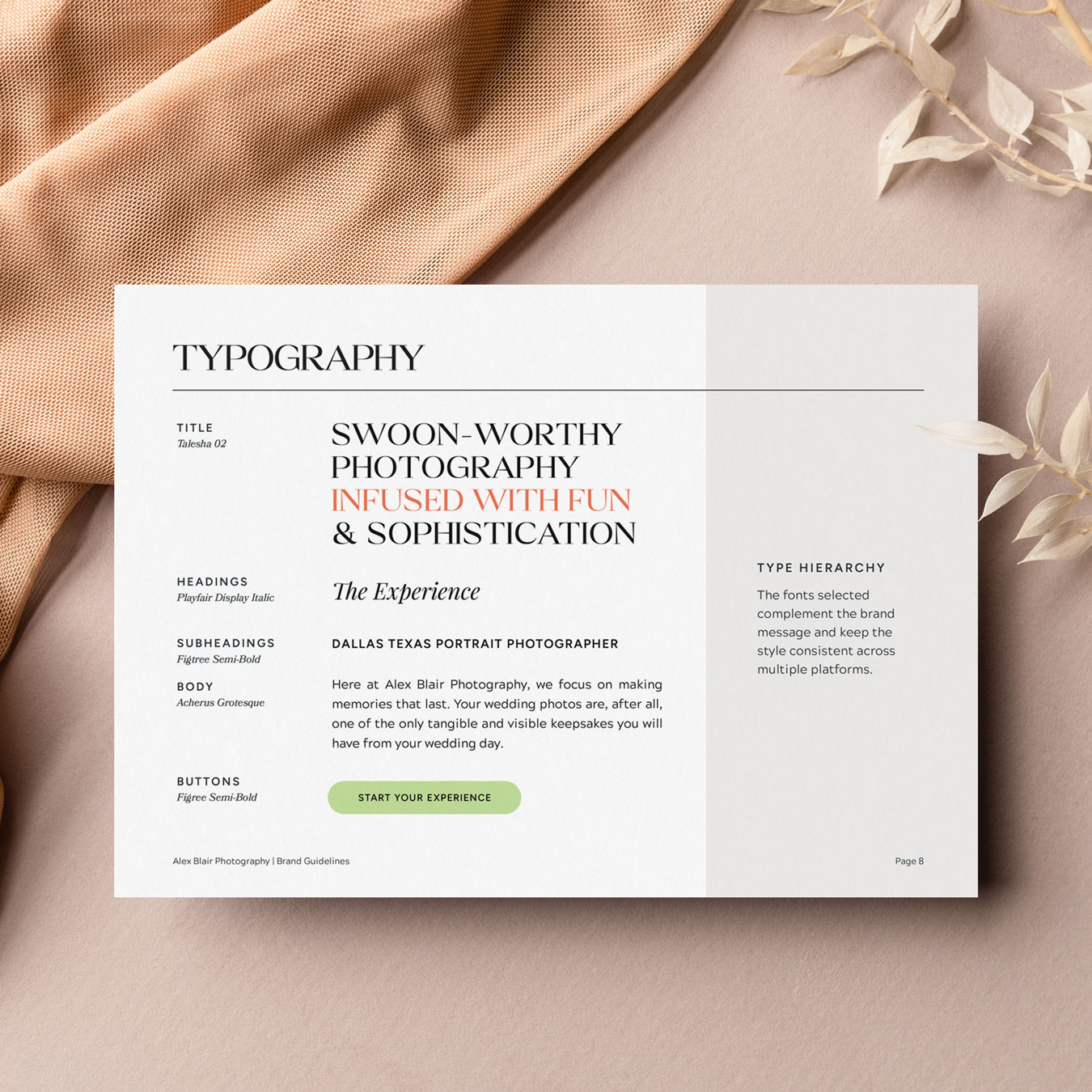
7. Photography Style
Imagery is an important aspect of branding, particularly for conveying emotion and other “intangibles” about a brand. Having guidelines on the style and type of images to use throughout your website and marketing will help keep this aligned with your overall brand message. This is an easy one for photographers. For other businesses, it might be necessary to source quality stock photos or hire a brand photographer.
8. Brand Graphics
Any additional graphics that are unique to your brand should also be included in your brand style guide. This may include icons, custom illustrations, patterns, and the like. Especially useful can be seeing them in action, such as how it should look on your website, packaging, or social media graphics. While not essential, incorporating custom illustrations into your branding can certainly add more personality to your brand and help set you apart from competitors who are only using stock clipart.
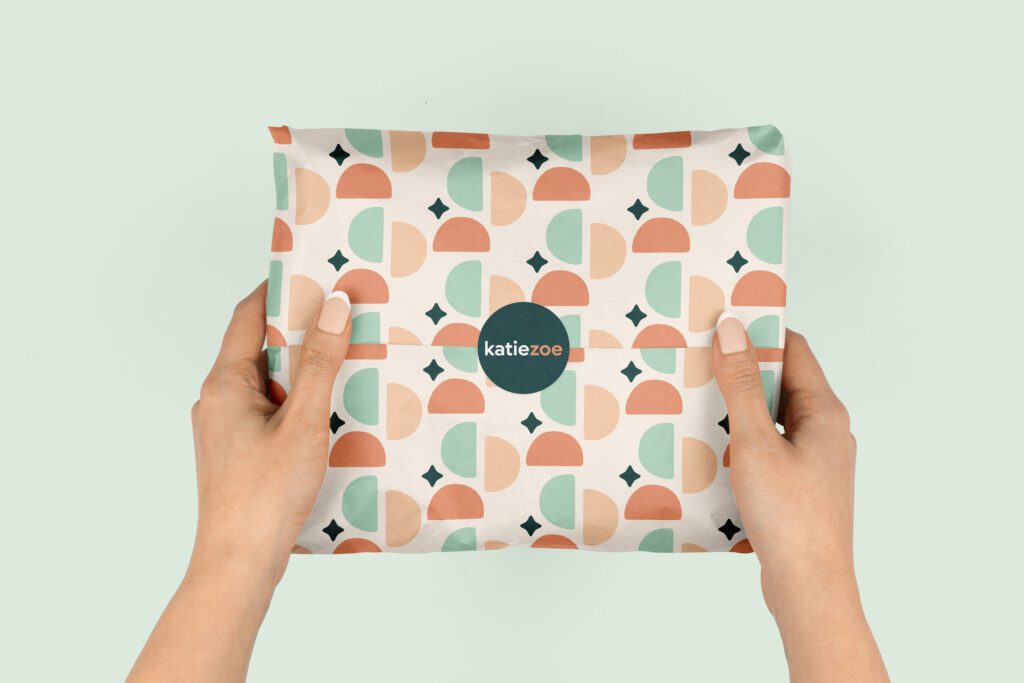
9. Brand Board
The brand board is essentially a visual summary of your brand elements working together. Similar to the moodboard, the brand board is a collection of photos that includes your primary brand colors, logo variations, mockups using type or brand graphics, and the like. This gives you a strong visual reference for your brand identity.
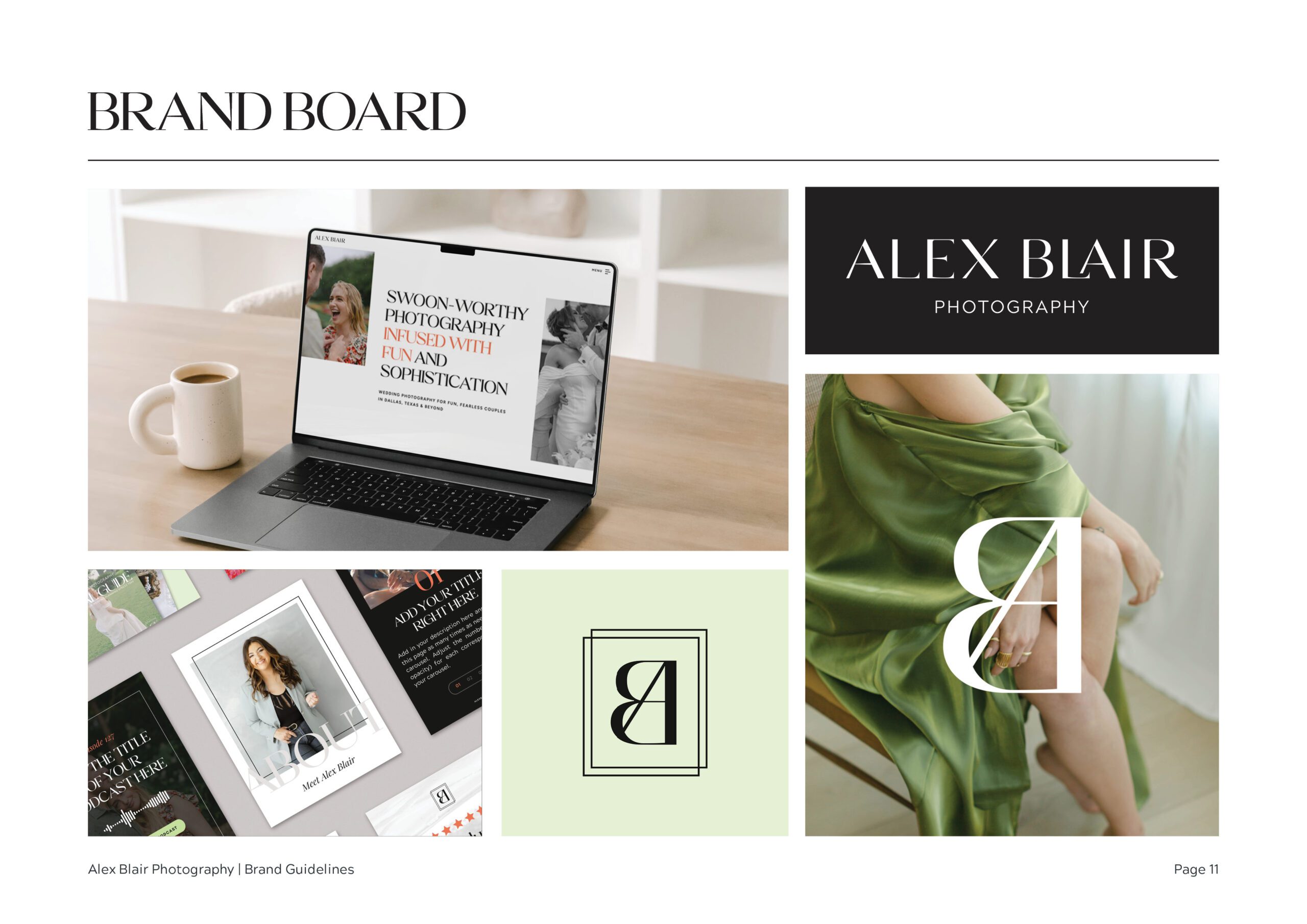
10. Brand Messaging Strategy
While not specifically related to design, including details about the brand persona, voice and tone can help solidify your brand identity. Your messaging strategy is, after all, an integral part of what defines your brand in the eyes of your customers, and should be in complete alignment to the visuals. Here at The Creative Accent, we provide a separate document for our clients called the Brand Essence Guidebook, which outlines these principles along with insights about a brand’s foundation, positioning, and target audience.
4 ways a brand style guide helps your business stay cohesive
#1 Having brand guidelines provides clarity
The temptation to get caught up in what competitors are doing or the latest trends can be enticing. This is especially true without having a clear picture of what your brand stands for. Having set guidelines in place provides a solid reference and reminder of what does and does not resonate with your brand.
#2 A brand style guide saves you time
As previously mentioned, many a wasted hour can be spent on creating additional graphics for your business (like social media posts) without clear guidelines in place. The Canva rabbit hole is very real. Just ask Nishka Riley, who faced the same challenge—tired of spending countless hours on every Instagram post. However, the real problem wasn’t the Instagram post or a lack of Canva knowledge. The real problem was two-fold: not feeling connected to her branding anymore and not having clear color and type guidelines to follow.
#3 Style guides help you reinforce the visual identity, which builds on your brand story
Building a strong brand identity is never about one isolated element. Rather, it’s about how all the many moving parts work together in harmony. By using a brand style guide to stay consistent, you are better able to reinforce your brand story at every touch point. Not only will this build stronger brand awareness and recognition, but it will also build connection as your story unfolds bit by bit, impression after impression.
Your future clients are out there watching, deciding whether or not to work with you. They are evaluating your personality (i.e. brand persona) with every interaction. Sending a consistent message, both in visuals and in voice, instills trust and strengthens the relationship over time.
#4 Having a brand style guide makes it easy to collaborate
There comes a time when you need an extra set of hands to get it all done. Whether you’re working with a virtual assistant or hiring a designer for a VIP Day, having a brand style guide ready to hand off can streamline the process. The third party can clearly follow your brand guidelines, which can mean less surprises, mishaps, and frustrating revisions for both sides.
Missing this useful resource? This could be the reason…
A brand style guide outlines all the essentials of your visual identity into one useful resource. Having this document at your fingertips enables you to keep your brand identity cohesive and consistent on any new collateral. It also simplifies design collaborations and minimizes the chance of misunderstandings.
However, if you feel you’re working with a pieced together brand identity because you lack clear guidelines, this could be a sign that:
- you started with just a logo and never had a complete brand identity in place
- your branding no longer fits your business so you’re deviating from your old branding without a strategy
If you have the sneaking suspicion your business could benefit from a brand refresh, take the Brand Refresh Quiz and find out!
